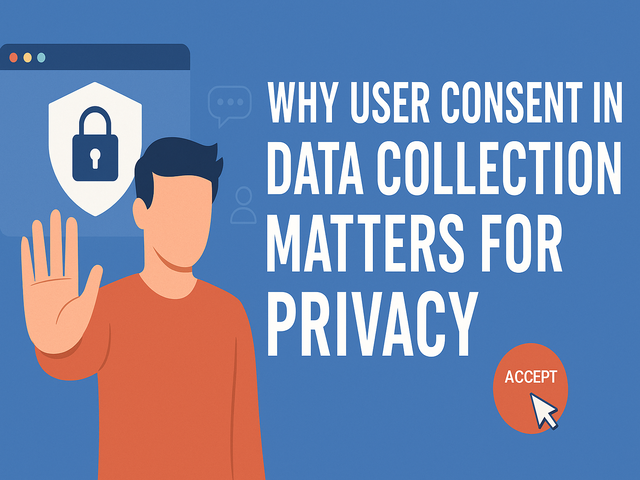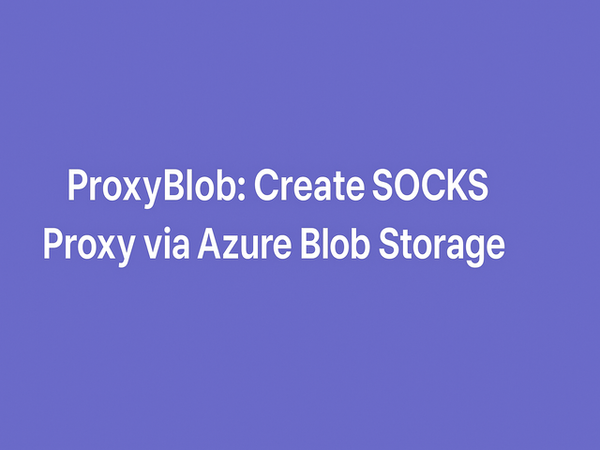Why User Consent in Data Collection Matters for Privacy

Your information is worth more than ever before. With every application you access, website you visit, or smart wear you put on, you're likely sharing data—sometimes knowingly, but more often than not without your knowledge. The following blog discusses why user awareness and consent in data collection are important, how your data gets used, and how to safeguard yourself.
Prefer watching instead of reading? Here’s a quick video guide
What Is Data Collection?
Data collection is the act of collecting and measuring user information. This information may be:
- Personal data (name, age, gender)
- Location data
- Browsing history
- Device data
- Behavioral data (what you click on, how long you remain on a page)
Companies gather this information to enhance services, tailor experiences, or serve ads. Sometimes it's done in the open. Other times, not so much.
Why Should You Care?
You may say to yourself, "I have nothing to hide," or "Everyone does it." But your data speaks volumes about you—your likes, routines, and even your vulnerabilities.
Threats of Poor Awareness and Consent:
- Privacy Invasion: Businesses are able to track your behavior and construct a profile without your even knowing it.
- Targeted Manipulation: Your information can be used to sway choices—what to purchase, whom to vote for, or even your opinions.
- Security Breaches: If firms keep your information insecurely, hackers get to steal it.
- Identity Theft: Your sensitive information can be used to pretend to be you.
The Role of User Consent
Consent is when you provide permission ahead of time before a company gathers or uses your information. But it needs to be:
- Informed: You should understand what's being gathered and for what reason.
- Freely given: You shouldn't be coerced into consenting simply to use the service.
- Specific: The firm should inform you precisely what information they require.
- Revocable: You need to be free to change your mind and rescind consent.
Examples of Bad Consent Practices
- Pre-checked boxes on signup forms
- Smurfed-over terms in extended privacy policies
- "All-or-nothing" applications that won't function unless you give them all your data
Real-World Example: Smart Glasses and Always-On Devices
Recently, firms like Meta launched smart glasses that capture voice and image data automatically. Although these products have nice features, they raise some serious privacy issues. Picture someone recording you in public without permission—or your chats being preserved on a server you hadn't consented to.
These products are usually accompanied by opaque consent practices, where users agree to terms without comprehending what they've signed up for.
Laws That Protect You (Somewhat)
Governments are attempting to make data harvesting safer in laws:
- GDPR (Europe): Demands unambiguous consent and allows users to view or delete their data without cost.
- CCPA (California): Permits users to view what is being collected and opt out of selling data.
- DPDP (India): Seeks to control how personal data is being processed and stored.
Despite these regulations, many companies continue to find ways around them—or exist in regions with lax laws.
How Can You Be More Aware?
- Read Permissions Carefully: When installing an app, don’t blindly tap “Allow.” Check what permissions it’s asking for. Does a calculator app really need access to your microphone?
- Check Privacy Settings: Many platforms (like Google or Facebook) offer dashboards to manage your data. Visit them and adjust settings.
- Use Privacy Tools: Consider browser extensions like uBlock Origin, Privacy Badger, or search engines like DuckDuckGo that don’t track you.
- Stay Informed: Subscribe to cybersecurity blogs (such as OpenExploit.in!), read the summaries of privacy policies, and keep current with significant data breaches.
What Companies Ought to Do
User awareness is not only your job—it's also the company's. Responsible companies should:
- Utilize simple language in privacy policies
- OffencesProvide simple opt-out options
- Guard against unnecessary data collection
- Notify users about privacy changes periodically
- Safeguard data with encryption and access controls
Some excellent examples are sites that offer consent dashboards or request permission first before turning on sensitive features such as location tracking or camera access.
The Future: Toward "Privacy by Design"
The idea of Privacy by Design is to design tools and apps with privacy as a consideration from the beginning. Rather than tacking on privacy features after the fact, companies can:
- Collect less data by default
- Keep data locally on your device rather than sending everything to the cloud
- Make clear, graphical dashboards of what's amassed
This method is more accessible to users to comprehend and manage their data.
Conclusion
Data gathering is a part of the new digital life, but at a cost to your privacy, it shouldn't be. As consumers, we must be present, question, and insist on transparency. As developers and creators, we should design systems that honor consent and privacy.
Awareness and consent aren't merely legal tickboxes—they're human rights.
Key Takeaways
- Always read what you're consenting to when you're using digital tools.
- Say no to permissions you don't need.
- Regularly change your privacy settings.
- Stand with businesses that value your data.
- Teach others to assist in creating a privacy-aware society.




